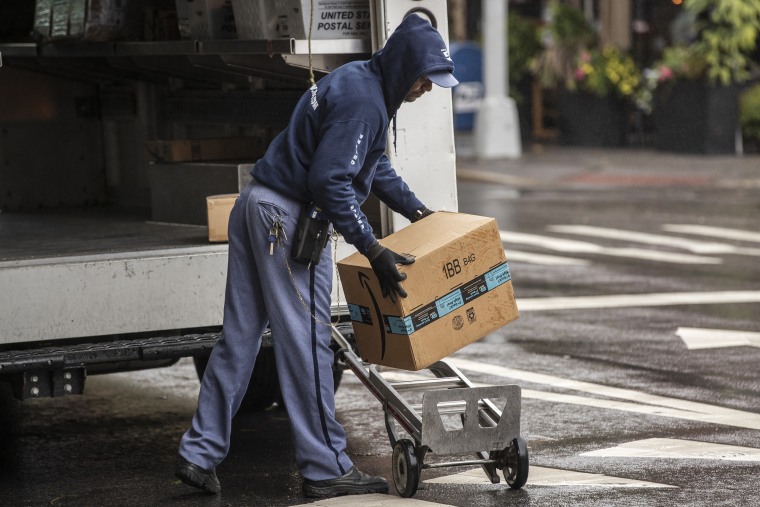Amazon’s marketplace sellers sold more than $3.5 billion worth of products on Prime Day, up by more 60 percent since last year — even more than Amazon’s base retail business, the company said on Thursday.
“We are thrilled that Prime Day was a record-breaking event for small and medium businesses worldwide,” said Jeff Wilke, CEO of Amazon’s worldwide consumer.
The e-commerce company did not disclose overall sales figures for the two-day event, but analysts estimated total sales would be anywhere between $9.9 to $11 billion, about a 43 percent increase from last year.
Prime Day’s staggering growth comes as more people hunker down at home and shop online as the coronavirus pandemic continues to spread across the country. E-commerce sales are expected to reach almost $795 billion this year, up about 32 percent from last year, according to data research firm eMarketer.
“We’ve seen e-commerce accelerate in ways that didn’t seem possible last spring, given the extent of the economic crisis,” Andrew Lipsman, principal analyst at eMarketer, said in a statement.
Amazon has been a clear winner over the course of the pandemic. Its stock has skyrocketed by about 87 percent since the beginning of the year, while Amazon CEO Jeff Bezos' net worth hovers around $200 billion, making him the richest person in the world, according to Forbes.
But these fortunes have come at a cost for workers, critics say. The pandemic has exacerbated worker concerns for safety as the company struggled to get orders fulfilled within a narrow one- to two-day time frame. Amazon became further embroiled in controversy when it terminated a Staten Island worker after he led strikes to press the company for additional protection in warehouses. Earlier in October, Amazon disclosed that more than 19,000 workers, or 1.4 percent of its 1.3 million-strong workforce, had been infected with the coronavirus.
“Amazon continues to demonstrate a callous disregard for the health and safety of its employees,” said Stuart Appelbaum, president of the Retail, Wholesale and Department Store Union, in a statement. “It shows more concern for its robots than for the working people who have helped create the massive wealth which has made Jeff Bezos the wealthiest person in the history of the world.”
Amazon’s size, and growing Prime member network, has made Prime Day too big for retailers to ignore. Typically a summer event, Amazon this year delayed Prime Day to October, creating a ripple effect across the retail industry. Mass retailers including Target, Walmart and Best Buy all rolled out deals events during the same week as Prime Day, in hopes of capturing dollars from shoppers who might be price shopping.
Amazon’s share of sales fell by about 2 percent from last year to 94 percent of consumer spending dollars within the first seven hours of the sales event, according to Edison Trends. Walmart came in next, at 3 percent, followed by Best Buy and Target at 2 percent.
While Amazon still maintains a heavy grip over Prime Day sales, its slightly lower share underscores the fierce competition among mass retailers to fight for consumer dollars with discounts and deals this holiday season. For instance, Amazon ran a Prime deal on Apple AirPods with a wireless charging case for $149.98. But Best Buy sold the same airpods with a discounted case for $169.99, along with four months of free Apple News and Apple Music for new subscribers.
“It’s interesting what you find,” said Adele Harrington, chief development officer with United National Consumer Suppliers, a wholesale distributor for the country’s biggest retailers. “No one seems to be trying to match Amazon — but they’re bundling offers.”
With the holiday season making up a major share of overall annual sales, retailers are pressed to drive shoppers in store and online to make up for lost revenue over the year. Many businesses may have to take a hit to their margins in order to run steep discounts that get people shopping, while also ramping up online distribution channels, Harrington said.
“The amount of uncertainty out there is unprecedented,” said Alexa Driansky, a senior vice president in the retail practice at AlixPartners consulting firm, in a statement. “The winners in this environment will be those who can quickly adapt to the dramatic channel-shift playing out right now and leverage the resulting increased data to drive decisions that create a seamless and safe customer experience.”
